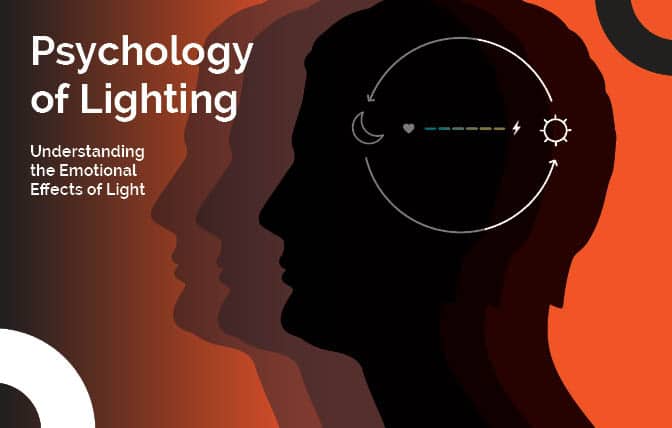Latest News
The Psychology of Lighting: Understanding the Emotional Effects of Light

Lighting plays a crucial role in our daily lives, beyond just providing illumination. The type, intensity, and colour temperature of light can have a profound impact on our emotions and overall well-being.
1. The Science Behind Lighting
Light affects our brain and body in various ways. Our bodies have internal clocks known as circadian rhythms, which regulate our sleep-wake cycles and other physiological processes. Exposure to natural light helps synchronize these rhythms, promoting better sleep and overall well-being. Artificial lighting, on the other hand, can disrupt these rhythms if not properly designed.

2. The Emotional Effects of Light
Lighting has the power to evoke different emotions and moods. Warm lighting with a reddish or yellowish hue creates a cozy and intimate atmosphere, often associated with relaxation and comfort. Cool lighting with a bluish tone can enhance focus and alertness, making it suitable for work environments. By understanding the emotional impact of lighting, we can design spaces that elicit the desired emotional responses.

3. Lighting and Health
The connection between lighting and health is well-documented. Inadequate lighting can negatively affect our sleep quality and disrupt our circadian rhythms. Insufficient exposure to natural light during the day can lead to various health issues, including sleep disorders and mood disorders like depression. Light therapy, using specific wavelengths and intensities of light, can be an effective treatment for these conditions.

4. Lighting in Different Environments
The lighting requirements vary depending on the environment. In residential applications, lighting serves both functional and aesthetic purposes. Layering different types of lighting can create a warm and inviting ambiance. In offices, well-designed lighting can enhance productivity, reduce eye strain, and create a stimulating work environment. Retail spaces utilise lighting to influence customer behaviour, with strategic lighting setups guiding customers through the store and highlighting products.

5. Designing with Light
Designing with light involves considering various factors, such as the purpose of the space, desired atmosphere, and user preferences. Proper lighting design requires choosing the right fixtures, considering factors like colour temperature, brightness, and energy efficiency. By using lighting strategically, designers can emphasize architectural features, create focal points, and enhance the overall aesthetic appeal of a space.
6. The Impact of Colour Temperature
Colour temperature refers to the perceived warmth or coolness of light. Warm lighting, resembling the colour of candlelight or sunrise, tends to create a relaxed and cozy atmosphere. Cool lighting, similar to daylight or moonlight, promotes alertness and focus. Understanding the psychology of colour and its relation to lighting can help in selecting the appropriate colour temperature for different environments.

7. Lighting and Interior Design
Lighting is an integral part of interior design. It can transform a space, highlight textures, and influence the overall ambiance. By incorporating lighting into interior design plans, designers can create visually appealing and functional spaces. Layering different types of lighting, such as ambient, task, and accent lighting, ensures flexibility and allows for the adjustment of lighting levels according to different needs.
8. Outdoor Lighting and Mood
Outdoor lighting serves both functional and aesthetic purposes. The emotional effects of lighting extend beyond indoor spaces. Thoughtfully designed outdoor lighting can enhance the ambiance of gardens, patios, and other outdoor areas. It can create a sense of warmth and invitation or evoke a dramatic and mysterious mood. Safety and security considerations should also be considered when planning outdoor lighting setups.

The psychology of lighting reveals how light influences our emotions and well-being. By understanding the emotional effects of light, we can design spaces that promote relaxation, productivity, and comfort. Whether it’s choosing the right colour temperature, layering lighting for functionality, or considering the health implications, lighting plays a pivotal role in creating the desired atmosphere and enhancing our overall experience.
By understanding the psychology of lighting, we unlock the key to creating spaces that not only captivate our visual senses but also nurture our emotional and psychological needs. Want to find out more about how we can help you with your commercial lighting solutions? Get a personalised solution today, contact us for more information.
We're a Casambi certified commissioning partner